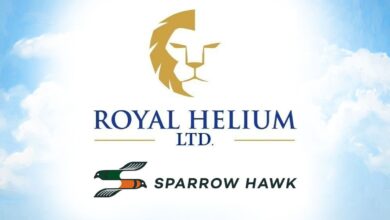
Beware of Ergot in Grasses and Grains This Year
Alexis DeCorby, AAg, Livestock and Feed Extension Specialist, Yorkton
Excessive moisture in parts of the province has contributed to increased forage yields. However, increased moisture is a risk factor for developing ergot. Ergot is a plant disease affecting cereal grains and grasses. Caused by the fungus Claviceps purpurea, Ergot is toxic to livestock and humans. Crops that are open-pollinated, such as rye and grasses, are most susceptible. Ergot bodies are characterized by a hard black to dark purple rind, with a white to grey interior and often become elongated in grains but may remain small and slender in grasses.
Ergot bodies most commonly develop in years with continuous moisture during the growing season. Moisture in the early part of the growing season promotes the germination of ergot bodies. Wet, cool, cloudy days extend the plant’s flowering period, allowing more time for ergot spores to enter the floret and develop ergot bodies. Poor crop fertility and copper deficiencies may also delay maturity and extend the time the floret is open.
Ergot in hay or grain is manageable if a plan is made early. Identifying the ergot body is crucial in managing and avoiding problems associated with ergot related toxins. The first step is to test any suspect crops. It can be difficult to obtain a representative sample from baled crops, as it is easy to miss ergot in the sample. At least 15 bales from each lot (ie. field, crop, specific area etc.) should be probed to obtain a representative sample.
Signs of ergot toxicity in livestock include weight loss, abortions, poor milk production, swelling and pain in extremities, loss of blood flow to extremities, nervousness, depression and convulsions. Cattle are unlikely to recover from vascular effects but may recover from neurological symptoms if the feed is removed.
The recommended inclusion rate for ergot in non-pregnant beef cattle diets is no more than 1,000 parts per billion (ppb). Pregnant and lactating cattle should not consume more than 250 ppb. Although these levels are considered acceptable, animal performance may decrease. It is the best practice to only feed ergot-containing feeds to non-pregnant animals.
Since ergot concentrations tend to be higher around field borders, try to separate forage or grain from the interior of the field and sample these areas individually. Grain fields are more likely to have more variance in concentrations than grass fields, though stratification may still occur in grass crops.
Understanding the risk factors for ergot and visual identification is key to preventing a nutritional issue. If you are using feed from an area with increased moisture, be aware that the risk for ergot exists. For more information on ergot or other livestock-related questions, contact your local livestock and feed extension specialist or the Agriculture Knowledge Centre at 1-866-457-2377.








































